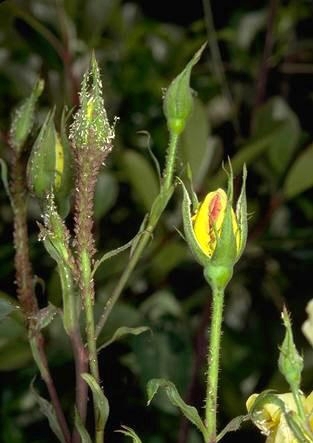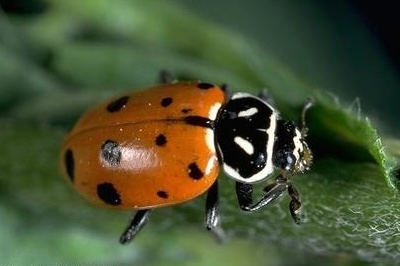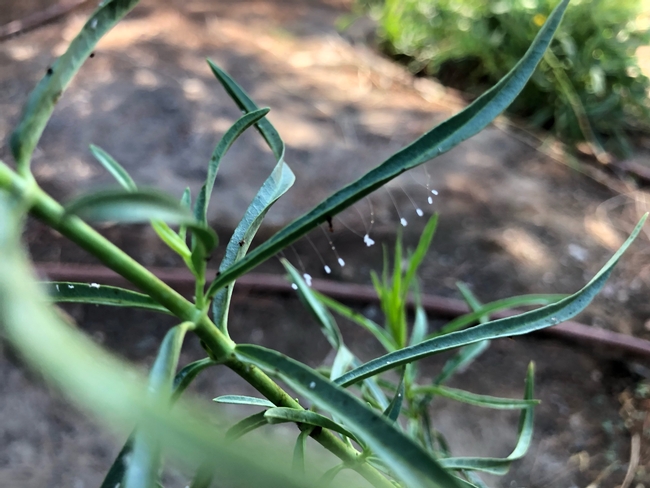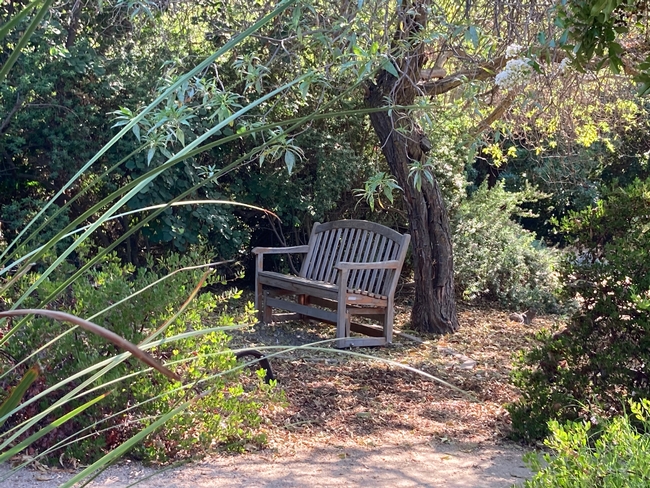
The opposite is true, according to UC Cooperative Extension Integrated Pest Management advisor Eric Middleton. The vast number of insects and other arthropods are either beneficial or neutral, he said. Middleton suggests putting away the pesticides and giving bugs the benefit of the doubt, in most cases.
To be sure, there are bugs that cause a lot of damage. The most common garden enemies in California are aphids, thrips, mealybugs, scales, spider mites and caterpillars.
Pests' natural enemies can dramatically reduce pest populations, while they do no harm to plants. Fungi, bacteria and other microbes can cause diseases that kills pests, but the beneficials you are most likely to see are insects. They work by eating or parasitizing pests.
“Natural enemies provide at least $13 billion in pest control services in U.S. agriculture,” Middleton said. They also offer untold benefits to gardens, yards and natural areas in California.
Predators and parasitoids help keep pests in check
Parasitoids live in close association with the pest host and end up killing it, often from the inside out. The most common parasitoids are tiny wasps, but parasitoids also include beetles and flies. These beneficials can be hard to identify because they spend so much of their lives inside the host. The most telling signs are mummified bodies of pests - small, hollow, hardened bumps attached to leaves.
“Parasitoids are very important for pest control,” Middleton said. “They are almost always more impactful than predators.”
Beneficial predator insects eat pests for food. Some are specialists and will only consume one type of pest, other are less picky.
Common specialists include the mealybug destroyer, black beetles that resemble their prey; spider mite destroyer, black beetles that voraciously feed on spider mites; and vedalia beetle, introduced from Australia to combat cottony cushion scale on citrus.

Lacewings are delicate, green generalist predators. They eat almost any type of living prey. Eggs can be spotted at the end of small stalks perched on leaves. Lacewing larvae look like small alligators with large sickle-shaped jaws. Some lacewing larvae are called trash bugs. The insects, which cover themselves with plant debris for protection, look like moving piles of garbage.
Syrphid flies are also important predators. Their larvae, very tiny green worms, feed on aphids, psyllids and other soft body insects. The adults look like small bees.
Other predator insects include big eyed bugs, minute pirate bugs, praying mantis, predatory thrips, ground beetles and soldier beetles. In addition, spiders of many types feed on larger and flying insects.
How to promote natural enemies?
Many types of predators can be purchased at home stores and garden centers, such as ladybeetles, lacewings, mites and minute pirate bugs. However, UC research has shown that their success in garden settings is mixed.
“You may need to frequently buy and release in order to control pests,” Middleton said. “If pests are a consistent problem, it's often better to improve conditions for natural enemies in your yard or garden.”
To make your garden or yard welcoming to natural enemies, reduce pesticide use. Most pesticides will also knock down natural enemies, even the organic options. If a treatment is necessary, use soaps, microbials, botanicals or oils.
Reduce mowing, tilling and removing debris.
“Stability is better for most natural enemies,” Middleton said. “Mowing and raking reduce habitat. Tilling can kill soil predators and predator larvae. Let your space be a little wild, the more wild, usually the better for natural enemies.”
Biodiversity also boosts natural enemy numbers. Flowers in particular are very important.
“Have a mixture of perennials and annuals, a range of 10 or 15 different species,” Middleton said. “It's good to have native flowers in the mix. They're better adapted to your area.”
For more information about beneficial insects, see the natural enemies gallery on the UC IPM website: https://ipm.ucanr.edu/natural-enemies/
Download a natural enemies poster from UC IPM here: https://ipm.ucanr.edu/IPMPROJECT/ADS/poster_naturalenemies.html

